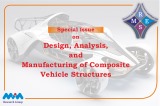Research Article
Analysis of various flow field designs for PEM fuel cells used in vehicular systems through 3D modelling
Muhammed Mücahid Toprak1, Ceyda Kök2, Suha Orçun Mert3
1Yuzuncu Yıl University, Department of Chemical Engineering 65080, Kampus, Van, Turkey
2Iskenderun Technical University- ISTE, Institute of Graduate Studies, 31200 Iskenderun, Hatay, Turkey
3Iskenderun Technical University- ISTE, Department of Petroleum and Natural Gas Engineering, 31200
Iskenderun, Hatay, Turkey
Keywords
Abstract
Proton Exchange Membrane;
Fuel Cell;
Electric vehicles;
Modeling and Simulation;
Flow Channels;
CFD
The importance of green energy has increased in recent years. Vehicles that don't run on fossil fuels and have zero CO2 emissions are on the agenda of many developed countries. Battery-based vehicles have long charge times and low range problems, making hydrogen-based fuel cell vehicles a good alternative candidate as a solution. Fuel cell system designs used in these vehicles is one of the most important subjects in the dawn of the renewable energy age. The present study compares different flow channel pattern designs for PEM fuel cells used in vehicles, all of which were designed and modeled as part of the study. Simulations were run on the three-dimensional flow channel designs to determine the most efficient patterns. Efficiency analyses were extended to include the membrane surfaces, where different properties of fuel flow channels, overall energy efficiency, and certain other parameters used in the PEM fuel cell systems were investigated. The study also includes comparison of the designed systems with fuel cell designs currently in commercial use. Finally, the effects of H2 and O2 concentrations used in the system were also investigated.
© 2021 MIM Research Group. All rights reserved.

